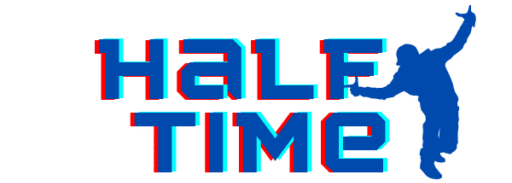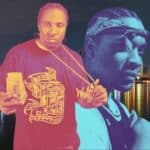Hip-hop has become a dominant force in the music industry in the past few decades, with artists from all over the world achieving commercial and critical success. Maryland is one state that has made significant contributions to the genre, producing great rappers and groups. In this article, we’ll take a closer look at Maryland’s history of hip-hop, its notable artists, signature sound, venues and events, and the future of the scene.
The history of Maryland hip-hop
Like many other hip-hop scenes across the country, Maryland’s rap culture has its roots in the 70s and 80s, when DJs and MCs began creating a new form of music by remixing disco and funk records. Those early days were mostly limited to house parties and clubs, but as the genre evolved, so did its reach. The 90s proved to be a significant decade for Maryland hip-hop, with more artists emerging, more music being produced, and a growing local scene.
Early beginnings and influences
Maryland hip-hop’s early days were shaped by DC’s go-go music and Baltimore’s club scene. These styles of music had a profound impact on the development of the genre in the state. Go-go music, which originated in Washington D.C. in the late 60s, was characterized by its percussive beats and call-and-response style. Baltimore’s club scene, on the other hand, was known for its high-energy dance music, which often incorporated elements of house, techno, and hip-hop.
Many local DJs and producers began using the grooves and sounds of go-go and club music in their beats and tracks. This fusion of styles set the tone for the future of Maryland hip-hop, inspiring artists to create music that was uniquely theirs. Some of the early pioneers of the scene included DJ Kool, who blended go-go and hip-hop in his tracks, and Da Youngsta’s, a rap group from Philly that was based in Maryland during the early 90s.
The rise of Maryland rap in the 90s
The golden era of hip-hop saw rap music explode across the country. In Maryland, groups like The Basement Boys, comprised of DJ Spen, Karizma, and Teddy Douglas, began producing tracks that blended house and hip-hop sounds. MCs such as Olu Dara, Oddisee, and Substantial also emerged, establishing themselves as key players in the local scene. While still relatively underground, the Maryland hip-hop scene was gaining traction.
One of the most significant events in the history of Maryland hip-hop was the emergence of Tim Trees, a rapper from Baltimore who gained national attention with his debut album “Drama City” in 1999. The album featured collaborations with fellow Baltimore artists like Mullyman and Bossman, and showcased the gritty, street-wise style that came to define the city’s rap scene.
The impact of the internet on the local scene
The internet played a significant role in the growth of Maryland hip-hop. The rise of social media and streaming platforms made it easier for local artists to promote and distribute their music to a wider audience. It also allowed fans to discover new artists from all over the state. Online communities like The Come Up Show and the Baltimore Club Music Facebook Group provided a platform for artists and fans alike to connect and share their love for the music.
Today, Maryland hip-hop continues to thrive, with a new generation of artists carrying on the legacy of those who came before them. From the gritty street anthems of Baltimore to the soulful sounds of DC, the state’s rap scene remains as vibrant and diverse as ever.
Notable Maryland rappers and groups
Maryland has a rich history of producing talented rappers and groups that have made a significant impact on the music industry. From the introspective lyrics of Logic to the punk rock influences of Rico Nasty, Maryland has been a breeding ground for artists who push boundaries and challenge the status quo.
Logic
Logic, born Sir Robert Bryson Hall II, is one of the most famous rappers to come out of Maryland. Growing up in Gaithersburg, Logic first gained attention for his mixtapes, which he released independently before signing to Def Jam. His debut album, “Under Pressure,” was released in 2014 and was certified gold. Logic’s introspective lyrics and unique flows have made him a fan favorite and brought him great success over the years.
What sets Logic apart from other rappers is his ability to tackle difficult topics such as mental health, addiction, and societal issues. He has often spoken about his own struggles with anxiety and depression, and his music has become a source of comfort and inspiration for many of his fans.
YBN Cordae
Originally from North Carolina, YBN Cordae moved to Suitland, an area of Prince George’s County, Maryland, when he was a teenager. He started making music in high school, eventually catching the attention of YBN Nahmir and YBN Almighty Jay, who he would later collaborate with. Cordae released his debut album, “The Lost Boy,” in 2019, which received critical acclaim and earned him a Grammy nomination for Best Rap Album.
What makes YBN Cordae stand out is his ability to blend old-school and new-school rap styles, creating a sound that is both nostalgic and fresh. His lyrics often reflect on his personal experiences growing up in Maryland, as well as his perspective on the current state of the world.
Rico Nasty
Rico Nasty, born Maria-Cecilia Simone Kelly, hails from the city of Hyattsville. She first gained popularity in 2017 with her mixtape “Sugar Trap,” which showcased her aggressive and unique style. Since then, she has continued to grow her fanbase and release music that pushes boundaries. Rico Nasty’s music is often noted for its punk rock influences and her fearless approach to rapping.
What sets Rico Nasty apart is her ability to blend genres and create a sound that is entirely her own. Her music often reflects on her personal experiences, including the challenges she has faced as a woman in the music industry. Rico Nasty is a fierce advocate for self-expression and encourages her fans to embrace their individuality.
Tate Kobang
Baltimore-native Tate Kobang first gained attention for his single “Bank Rolls,” which went viral in 2015. Since then, he has continued to release music that showcases his versatility as an artist. His tracks range from introspective and emotional to fun and upbeat. Kobang’s music often reflects his upbringing in Baltimore and his experiences growing up in the city.
What sets Tate Kobang apart is his ability to bring a unique perspective to his music. His lyrics often touch on the struggles of growing up in Baltimore, including poverty, violence, and systemic oppression. Kobang is a powerful voice for his community and uses his platform to raise awareness about issues that affect his fans.
Creek Boyz
Creek Boyz are a group of artists originating from Baltimore’s Park Heights neighborhood. They gained national attention for their single “With My Team,” which was released in 2017 and later remixed by Lil Yachty. The group’s music often emphasizes the importance of loyalty and the bond between friends and family. They have been recognized for their unique sound, which blends elements of trap music with uplifting harmonies.
What sets Creek Boyz apart is their ability to create music that is both catchy and meaningful. Their lyrics often reflect on their personal experiences growing up in Baltimore, including the challenges they faced and the people who helped them along the way. Creek Boyz are a testament to the power of community and the importance of staying true to yourself.
The Maryland hip-hop sound
Maryland hip-hop has a distinct sound that draws from different local and regional influences. Here are some of the factors that contribute to it:
Regional influences and styles
Maryland hip-hop draws inspiration from the music scenes of nearby cities, including DC and Baltimore. The state’s proximity to the DMV (DC, Maryland, Virginia) allows for a free exchange of ideas and sounds. The area’s rich musical history, including go-go, jazz, and R&B, also plays a role in shaping Maryland hip-hop’s sound.
DC’s go-go scene has been a major influence on Maryland hip-hop. Go-go music is a subgenre of funk that originated in DC in the 1970s. The music is characterized by its use of live instrumentation, call-and-response vocals, and a heavy emphasis on rhythm and groove. Go-go music has been incorporated into Maryland hip-hop in various ways, from using go-go samples to rapping over go-go beats. Some Maryland hip-hop artists, such as Wale, have even collaborated with go-go bands.
Baltimore’s music scene has also played a role in shaping Maryland hip-hop’s sound. Baltimore club music, a genre that originated in the city in the 1980s and 1990s, has been incorporated into Maryland hip-hop in various ways. Baltimore club music is characterized by its fast tempo, use of samples, and call-and-response vocals. Maryland hip-hop artists have used Baltimore club samples in their beats and have even rapped over Baltimore club tracks.
The role of go-go music
As mentioned earlier, go-go music played a significant role in the development of Maryland hip-hop. Go-go’s use of live instrumentation and its emphasis on rhythm and groove have been incorporated into Maryland’s hip-hop sound. In some cases, local MCs will even rap over go-go beats.
Go-go music has had a lasting impact on Maryland hip-hop. The music has influenced the production style of many Maryland hip-hop producers, who often use live instrumentation and incorporate elements of funk and soul into their beats. Go-go’s call-and-response vocals have also been incorporated into Maryland hip-hop, with MCs and DJs often interacting with the crowd during live performances.
The impact of Baltimore club music
Another key influence on Maryland hip-hop is Baltimore club music. This genre of music originated in the city in the 80s and 90s and is characterized by its fast tempo and use of samples. Baltimore club music has been incorporated into Maryland hip-hop in various ways, from sampling classic club tracks to rapping over club beats.
Baltimore club music has had a significant impact on Maryland hip-hop’s production style. The genre’s use of samples and fast-paced beats has influenced the production style of many Maryland hip-hop producers. Baltimore club’s call-and-response vocals have also been incorporated into Maryland hip-hop, with MCs and DJs often interacting with the crowd during live performances.
In conclusion, the Maryland hip-hop sound is a unique blend of regional influences and styles. The music draws inspiration from nearby cities, including DC and Baltimore, and incorporates elements of go-go and Baltimore club music. The result is a sound that is distinctly Maryland and has had a significant impact on the hip-hop world.
Maryland hip-hop venues and events
Maryland has a thriving hip-hop culture that is supported by a variety of venues and events. From local clubs and performance spaces to annual festivals and showcases, the state offers a diverse range of opportunities for hip-hop enthusiasts to enjoy. Here are some of the most notable:
Local clubs and performance spaces
If you’re looking for a night out to enjoy some live hip-hop, Maryland has plenty of options. One of the most famous is the Fillmore Silver Spring, a concert venue in Silver Spring that has hosted acts like J. Cole and Lil Wayne. The venue, with its state-of-the-art sound system and spacious dance floor, attracts music lovers from all over the state.
Baltimore, too, has its fair share of hip-hop clubs and performance spaces. The Ottobar, located in the city’s Remington neighborhood, is a popular spot for local and touring acts alike. The venue has a laid-back vibe that attracts a diverse crowd of music fans. Meanwhile, The 8×10 in Baltimore’s Federal Hill neighborhood offers a more intimate setting for live performances, with its cozy stage and dimly lit interior creating a unique atmosphere.
Annual festivals and showcases
For those looking to experience Maryland’s hip-hop culture on a larger scale, there are several annual festivals and showcases that are not to be missed. The most notable is the Trillectro Music Festival, which takes place in Columbia and features a lineup of up-and-coming artists and established acts. The festival has become a must-attend event for hip-hop fans in the region, with its energetic crowds and diverse lineup creating an unforgettable experience.
Other festivals include the Artscape festival, which takes place in Baltimore and features a wide range of art and music, including hip-hop performances. The festival attracts hundreds of thousands of visitors each year and is a celebration of the city’s vibrant arts scene. The Broccoli City Festival, which takes place in DC but often features Maryland rappers, is another popular event that showcases some of the best talent in the region.
Open mic nights and community events
For those looking to discover new talent or showcase their own, there are several open mic nights and community events in Maryland that cater to the hip-hop community. One of the most popular is the monthly Rep Your Hood showcase, which takes place in Baltimore. The event is a platform for local artists to perform their music and connect with fans. It’s also a great opportunity for music lovers to discover new talent and support the local hip-hop scene.
Other community events include block parties and pop-up shows, which are often organized by local artists and promoters. These events are a great way to experience hip-hop in a more informal setting and to connect with others who share your passion for the music.
The future of Maryland hip-hop
Maryland hip-hop has come a long way since its early beginnings, and it shows no sign of slowing down. Here are some of the things to look out for in the future of the scene:
Up-and-coming artists to watch
Maryland is home to many talented up-and-coming artists who are making a name for themselves in the local scene. Some of the most promising include Black Fortune, an MC from PG County whose music blends trap and soul sounds; Pink Siifu, a rapper and producer from Baltimore with a politically charged and experimental sound; and Innanet James, a Maryland-based rapper whose music combines introspective lyrics with catchy hooks.
The role of social media and streaming platforms
Social media and streaming platforms will continue to play a significant role in Maryland hip-hop’s growth. These tools allow artists to promote and distribute their music to a wider audience, and they also provide a platform for connecting with fans. Instagram Live sessions and TikTok challenges have become popular ways for artists to engage with their fans and build their following.
Collaborations and partnerships with other regional scenes
As the lines between regional music scenes continue to blur, we can expect to see more collaborations and partnerships between Maryland hip-hop artists and artists from other areas. Maryland artists have already worked with artists from neighboring cities like DC and Baltimore, but we can expect to see more collaborations with artists from other regions, as well as artists from other genres.
Conclusion
Despite its relatively small size, Maryland has made a significant contribution to the world of hip-hop. Its history is rich with influential artists, from the early days of go-go and club music to the current wave of innovative rappers and producers. With a unique sound that draws from various regional influences and a vibrant community of venues, festivals, and events, Maryland hip-hop is poised for continued growth and success.



